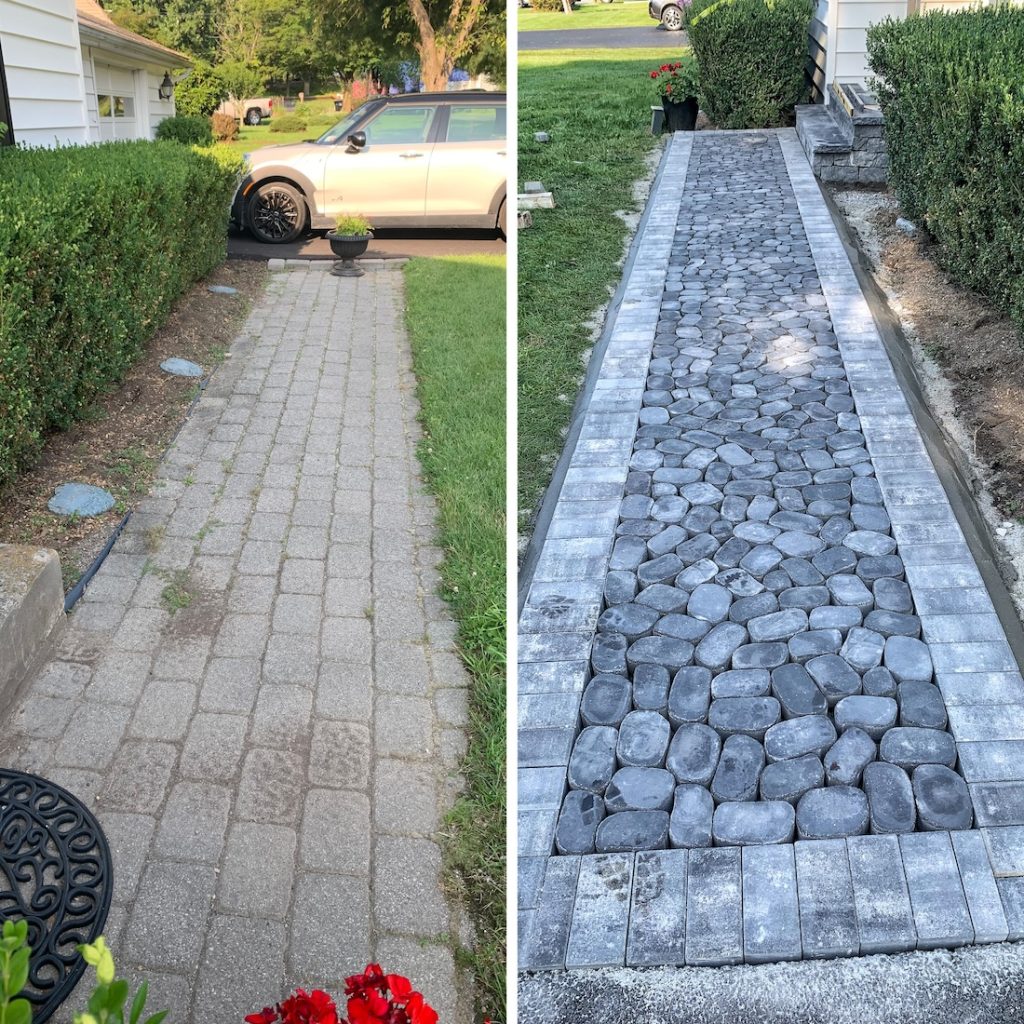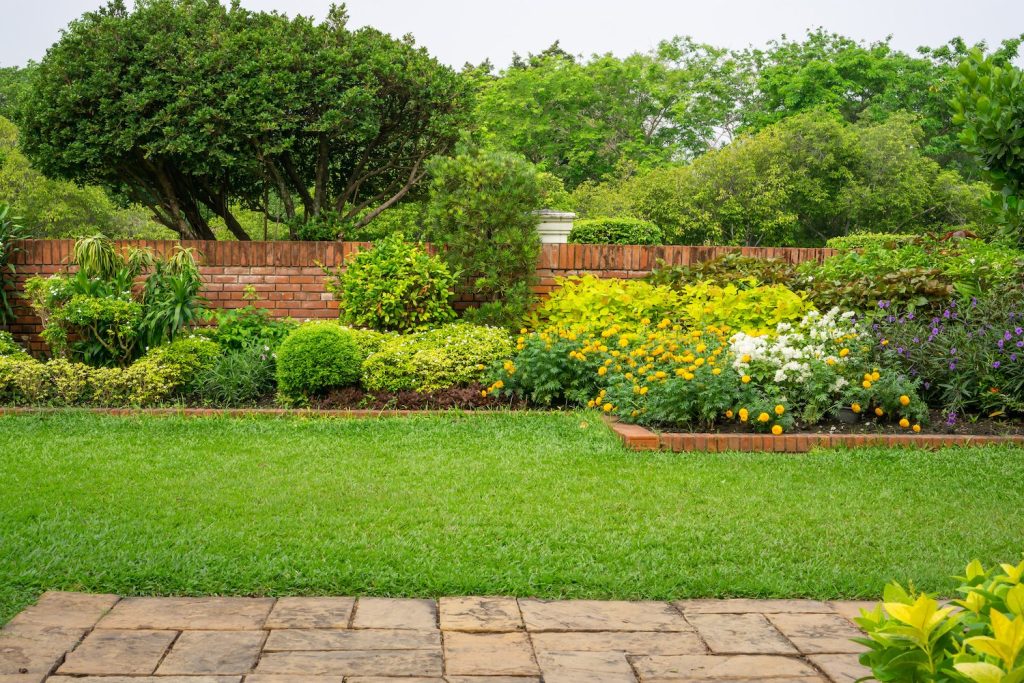The new paver patio creates a stunning place for homeowners to lounge with drinks in hand. But months or years have passed, and the patio no longer looks as inviting as it initially did. Pesky weeds have sprouted, necessitating these five prevention tips to keep the pavers weed-free and beautiful.
Why do weeds grow between pavers?
Weeds are a nuisance, taking root in a variety of inhospitable conditions. All these plants require sunlight, water, air, and a suitable growing environment. Opportunistic weeds thrive in organic materials, such as those that may accumulate between pavers. As long as they receive sunlight and water, weeds flourish. Adaptable and persistent, weeds can tolerate a wide range of environmental conditions, including varying temperatures and light levels. Since they produce many seeds, weeds spread rapidly through wind and animal dispersal.
One HUGE misconception about weeds and pavers
A common misconception among paver patio owners and those considering installing pavers is that weeds grow up from beneath the pavers. In reality, when a patio is installed correctly, there are at least 5 inches of crushed gravel beneath the pavers, and sometimes even more, depending on the application (such as a driveway) or the local climate. In some regions, landscape fabric is also placed before the gravel for added protection.
The pavers themselves are set on top of this gravel, and the joints are filled with polymeric sand, which hardens to form a solid barrier. As a result, weeds have a very tough time growing up from below a properly installed patio.
Most often, when you see weeds on a patio, they’re growing from organic material such as leaves, grass, or debris that has collected on top of the sand between the pavers. The good news is that with some regular maintenance to keep your patio clear of debris, you can easily prevent weed growth in and around pavers. And if they’ve already appeared, a little extra effort can get rid of them. With that being said, how do we prevent weed growth BETWEEN pavers? There are two ways to prevent weed growth between pavers.
How can I prevent weed growth between pavers?
1. Clean Your Patio
This is especially true for newly installed pavers, allowing you to get ahead of weeds from the start. Give the pavers a soft pressure wash a couple of times a year. Pro-tip: A soft pressure wash will not remove polymeric sand. If you find yourself eliminating sand, you are likely using too much pressure. Washing your pavers is particularly important during the Fall season in colder climates, as fallen leaves are a major contributor to organic buildup in paver joints.
2. Seal Your Pavers
It is recommended that the sealer be applied to new installations or once existing weeds are removed from paver joints and the joints are refilled with polymeric sand. The task of sealing is best left to professionals with the proper equipment and skill to prevent the sealer from flaking, discoloring, or sealing in debris. Even with a sealer, debris can still accumulate over time; however, it can certainly serve as an additional layer of defense. Nevertheless, it does require reapplication every 2-3 years on average.
What should I do if my pavers already have weeds?
1. Install a new patio
Just kidding! This is totally and completely unnecessary.
2. Give it a wash
Pressure washing isn’t just preventive, it can also be the cure to get your patio back in good health. Turbo nozzles are especially effective for cleaning pavers with significant organic buildup. Depending on the extent of the build-up and the age of the joint sand, you may want to pressure wash the joints to allow new polymeric sand to be applied, providing your patio with the best possible defense against weeds. This can be an extremely tedious and messy undertaking that some homeowners may not want to tackle themselves. For this reason, Sleek Scapes offers a paver restoration service that revitalizes old and overgrown pavers.
3. Less Permanent Treatments (Proceed with Caution)
Both herbicides and weedicides are chemical solutions that deter weed growth at any stage of germination, such as pre- or post-emergence. The weedicides prevent new weeds from sprouting for up to one year. Pro-tip: Before spraying chemicals on your beautiful pavers, ensure the product is rated explicitly for pavers and test it in an inconspicuous area to check for any adverse effects (e.g., discoloration). Herbicides are available as non-selective, which means they kill any plant, including useful ones like grass. Contact-poison herbicides kill weeds immediately, so they should be used cautiously in residential areas. Systemic poison herbicides kill weeds gradually, dispersing from the root to the leaves, and are safe.
There are natural solutions as well. Diluting horticultural vinegar, which delivers a higher acetic acid content than household vinegar, with water can act as a natural herbicide. Spray on the weeds to burn and dehydrate them. Within two days, the weeds should perish. Again, test in a hidden area before you go and spray vinegar all over your patio.
Salt is another household staple that can be used to eliminate weeds. The granules work by dehydrating the weeds. Mix three parts salt with one part water. Apply the homemade solution to the existing weeds and repeat the process monthly until new weed growth stops.
Sprinkle baking soda, which also acts as a dehydrator, over the spaces between the brick pavers. Sweep in the baking soda, which draws out the moisture from the weeds’ cells, causing them to dry up. Baking soda is especially effective for the cracks between the brick pavers.
Boiling water, another natural weed deterrent, kills the plants on contact. It’s a safe and accessible route to eliminate weeds without harming other plants. This solution is most effective on young weeds, however. However, it can be used in tight spaces, such as between pavers.
At Sleek Scapes, we offer comprehensive preventive maintenance and restoration services. We provide ongoing pressure wash services as well as the aforementioned restoration services, which include pressure washing, lifting and leveling sunken pavers, and installing new edging and polymeric sand.
If you’re planning to build a new patio, we’ll work with you to design the patio you’ve envisioned. Our expert contractors then undertake the professional installation. We offer a wide range of paver options in various sizes, shapes, and textures to meet your aesthetic needs.
Call us today to discuss your patio installation or maintenance needs in Warwick, NY.


